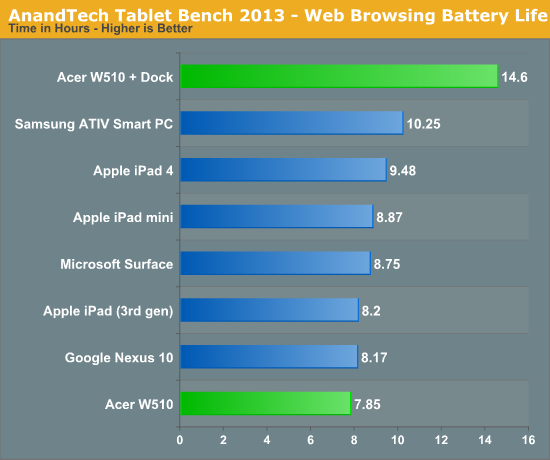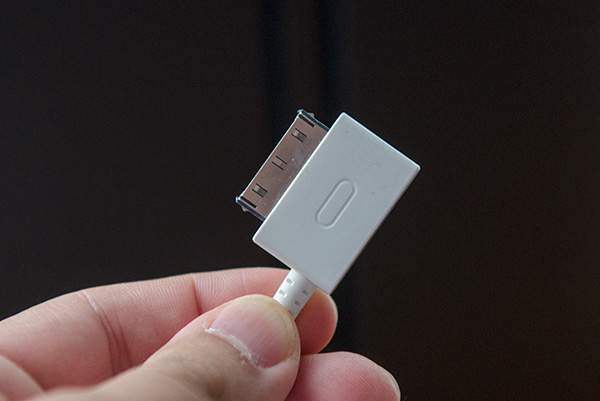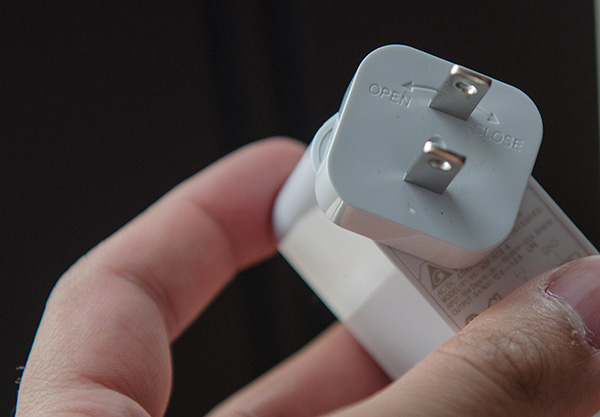The Clover Trail (Atom Z2760) Review: Acer's W510 Tested
by Anand Lal Shimpi on December 20, 2012 10:34 AM ESTCharging, Battery Life & Dock Power
Both the W510 and its optional dock feature integrated 27Wh batteries. As a result, with the dock attached you can expect a near doubling in battery life. It’s not an outright doubling because the dock itself obviously draws some power.
With the dock attached Windows 8 recognizes both batteries and displays individual charge details in desktop mode:

Battery 1 is the W510 tablet, Battery 2 is the dock
The lock screen displays the combined charge percentage across both batteries to keep things simple.
Similar to how things worked with ASUS’ Transformer series under Android, the dock is used to charge the tablet’s battery. Only once the dock’s charge is depleted will the W510’s internal battery start to drain, at which point it will power both the tablet and the dock.
As is the norm with most modern tablets, the W510 introduces Acer’s own proprietary power connector. The connector itself is reminiscent of similar connectors from Apple (prior to Lightning), ASUS and Samsung. Both the tablet and the optional dock feature a power input so you can charge the system regardless of whether or not it’s docked. The same power connector is used to connect the tablet and dock so it functions for both power and data delivery.
Acer bundles an 18W power adapter with the W510. The power adapter itself isn’t anything remarkable, however Acer did use a nifty removable plug that easily twists on/off. The W510 only ships with the plug for whatever region you purchased it in so I’m not sure how useful this feature is, but it’s nice to see design innovation from Acer here.
Charge time on the W510 is pretty reasonable for a 10-inch tablet. I clocked in a full charge from 0% with the tablet off at 3.632 hours. Peak power draw during the charge was 16.74W at the wall.
Note that this is just how long it takes to charge the W510 itself. The dock contains another 27Wh battery which should roughly double charge time.
Intel’s Atom Z2760 inside the W510 is passively cooled, but under load the upper right corner of the tablet can get fairly warm. I measured a max surface temperature of 38.2C under a heavy CPU load.
Battery Life
We've started running our new smartphone web browsing battery life test on tablets as well. If you missed its introduction in our iPhone 5 review, here's a bit about the new test:
We regularly load web pages at a fixed interval until the battery dies (all displays are calibrated to 200 nits as always). The differences between this test and our previous one boil down to the amount of network activity and CPU load.
On the network side, we've done a lot more to prevent aggressive browser caching of our web pages. Some caching is important otherwise you end up with a baseband/WiFi test, but it's clear what we had previously wasn't working. Brian made sure that despite the increased network load, the baseband/WiFi still have the opportunity to enter their idle states during the course of the benchmark.
We also increased CPU workload along two vectors: we decreased pause time between web page loads and we shifted to full desktop web pages, some of which are very js heavy. The end result is a CPU usage profile that mimics constant, heavy usage beyond just web browsing. Everything you do on your device ends up causing CPU usage peaks - opening applications, navigating around the OS and of course using apps themselves. Our 5th generation web browsing battery life test should map well to more types of mobile usage, not just idle content consumption of data from web pages.

With only a 27Wh battery, the W510 delivers our shortest runtime in our new test thus far. Normalizing for battery capacity however and the W510 looks quite competitive. Note the huge advantage that Samsung's Clover Trail tablet enjoys here however. I suspect there's something more than just a smaller battery holding the W510 back. Running the same test with the dock attached increases battery life by 86%.
Our video playback test remains unchanged from previous tablet reviews. Here I'm playing a 4Mbps H.264 High Profile 720p rip I made of the Harry Potter 8 Blu-ray. The full movie plays through and is looped until the battery dies. Once again, the displays are calibrated to 200 nits:

Video playback battery life is a similar story. Equipped with a fairly small battery for its screen size, the W510 weighs in at just under 9 hours of continuous playback. Samsung's 30Wh Clover Trail based ATIV Smart PC does much better by comparison.













104 Comments
View All Comments
BSMonitor - Thursday, December 20, 2012 - link
ExactlyNot everyone runs only prepackaged software from Best Buy.
I can write programs in Visual Studio very easily on the PC. With no recompiles, emulators, etc, I can also run that program on the x86 tablets.
Guspaz - Thursday, December 20, 2012 - link
That has nothing to do with x86 compatibility and everything to do with Win32 compatibility, and that's all on Microsoft.If Microsoft had not prevented third-party apps from using Win32 on RT devices, you'd be able to recompile most apps with no code changes for ARM.
Alexvrb - Thursday, December 20, 2012 - link
Well that would be nice for us tech heads, but opening up WinRT like Win8 brings all of the negatives too. For most of your average users, WinRT is better. You can't take it online, click some ads, and get a nice trojan or two. It's really a good tablet platform overall.So now we've got the option of some affordable Atom-based Win8 tablets. So you can pick whatever suits your needs more, WinRT (and its restrictive walls and safety) or Win8 (and all the traditional Windows advantages and disadvantages).
Chamie - Tuesday, March 5, 2013 - link
> You can't take it onlineYou can stop here, lol. (No browsers, only IE) Kidding.
But, actually, you can't get it as easy on x86 Windows too — UAC and other stuff should prevent it. The only thing preventing you from getting the same on RT will be it's lack of popularity for users and, thus, for malware makers. Even WiFi routers suffer from infections (see Psyb0t, Chuck Norris etc.) despite running Linux on MIPS, why would Windows on ARM be any safer?
Guspaz - Thursday, December 20, 2012 - link
Every single app you mentioned there runs on ARM (either the full version or a mobile tablet-oriented version) except for notepad++, and the only reason it won't run on ARM is because Microsoft forbids the use of Win32 on RT.x86 compatibility isn't all its cracked up to be. Most of the software you use on an x86 Linux distribution works just fine on an ARM Linux distribution, including stuff people tend to use on a day to day basis like Chrome or Firefox.
I think you could make a better case for Win32 compatibility, x86 compatibility doesn't mean much for most people.
SM123456 - Wednesday, February 13, 2013 - link
But this netbook costs $600. Ridiculous!Concillian - Thursday, December 20, 2012 - link
Depends entirely on what you want to run.Consider, for example automotive applications that interface with your car. These are very lightweight and old tech. A laptop in the passenger seat with a TN screen is overly bulky and the crappy screen is a liability. A tablet is a huge improvement in ergonomics.
Applications like that are NEVER getting ported to android or iOS, so x86 compatibility is the only answer. I suspect that there are a number of similar industrial applications. At my work, we have some very lightweight applications at work running homemade VB or .Net applicatoins from 1.6GHz P4 machines. With x86, we could run them, but nothing else will. Some of these were developed to run on a 486 and we still use the basic program to run the equipment.
x86 compatibility is meaningful to people who do actual work with these kinds of devices. Those who treat them like toys? Probably not so much.
Slaimus - Thursday, December 20, 2012 - link
There are many such apps for iOS and Android. They interface with a bluetooth OBD transmitter and you can wirelessly view real time information. See: https://play.google.com/store/apps/details?id=org....Concillian - Thursday, December 20, 2012 - link
I know of and have used Torque. It's a toy.It cannot do the same thing that factory diagnostic tools and open source reverse engineered equivalent tools can do (like re-programming the ECU or TCU for your desires). Those tools are specialized by vehicle brand and are (x86) Windows exclusive.
Industrial applications for these kinds of things move at a GLACIAL pace. Less than a decade ago I was regularly using a program that used a *terminal program* to communicate through a serial cable to program the device... It was straight out of the 80s... iOS and Android apps for the stuff that people make money with are not going to spring up overnight.
x86 compatibility is a must for these kinds of applications. They also happen to be applications that are VERY light on hardware, so these kinds of tablets are a good option.
lmcd - Thursday, December 20, 2012 - link
I'm sorry, but you attribute "actually doing work" to "requiring junky legacy apps?" Not every workplace is burdened with those. And most that are depend on the mouse+keyboard interface anyway, so the whole "Win 32' compatibility is irrelevant.Besides, why did you write homemade VB apps anyway? VB is VB... and .Net shouldn't be that hard to port to a new version (which, obviously, would run on RT).